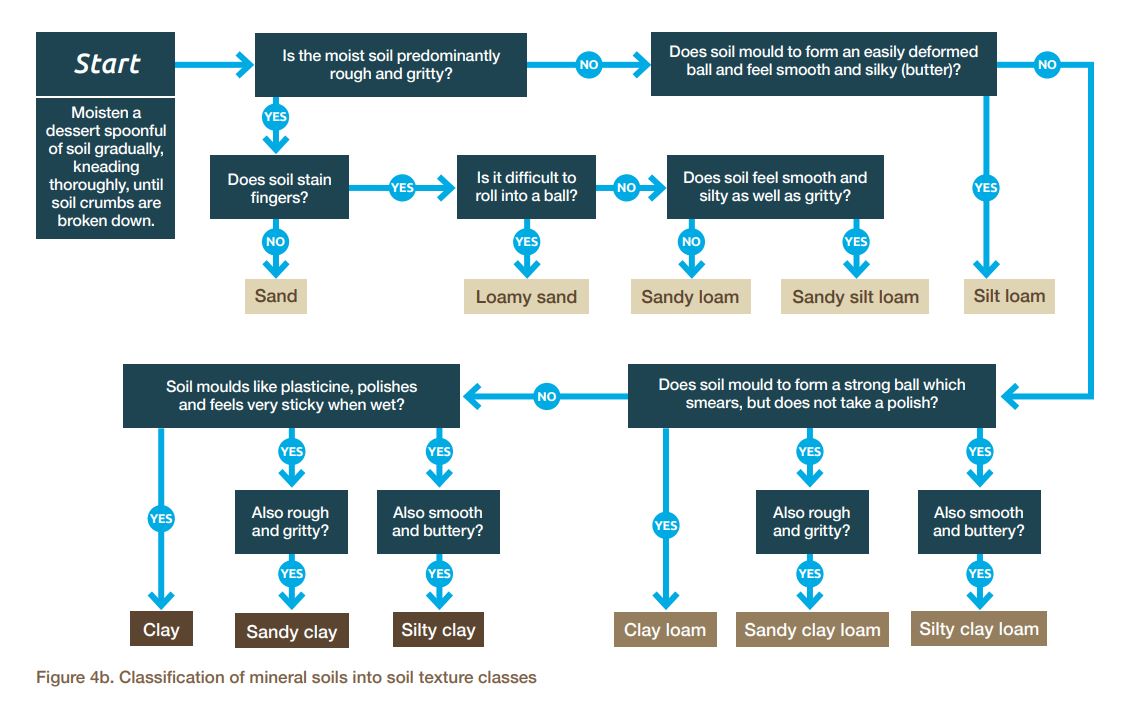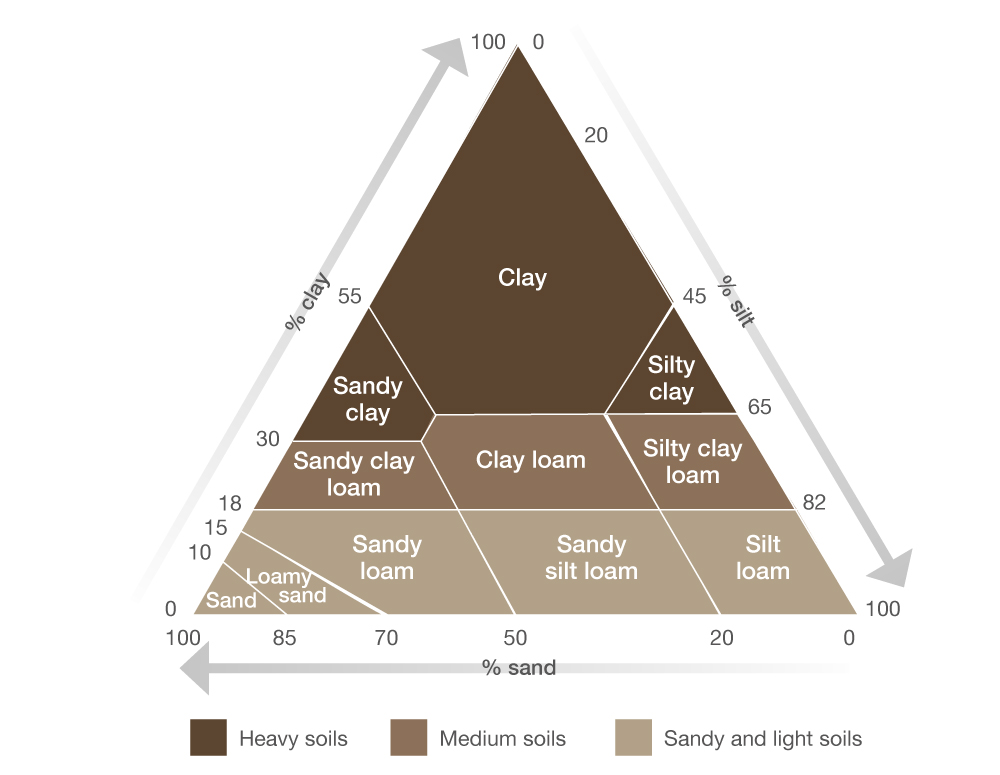- Home
- Knowledge library
- How to determine soil texture
How to determine soil texture
Soil texture is defined by the proportion of sand, silt and clay-sized mineral particles in the soil. It can be determined by hand or by sending a soil sample to a laboratory.
Importance of knowing soil texture
Texture determines how easy the soil is to work, and can indicate how resilient the soil is to structural damage. Soil texture is also a major factor that controls how much water a soil can hold, how available it is to plants, how good it is at holding onto lime or other nutrients, and how well roots can grow.
Determining soil texture by hand
Follow these steps and the flow diagram to determine a soil’s texture:
- Take about a dessert spoonful of soil
- If dry, wet up gradually, kneading thoroughly between finger and thumb until soil crumbs are broken down
- Enough moisture is needed to hold the soil together and to show its maximum stickiness
- Follow the paths in the diagram below to determine the texture


Laboratory analysis of soil texture
Soil texture is determined most accurately by laboratory analysis.
A list of soil testing companies
Use online soil texture maps
For an indication of the soil texture in a field you can view online maps that provide 1:50K or 1:250K resolution.
UK Soils Observatory (UKSO) Map Viewer or the UKSO mySoil app available in the App Store or Google Play
Land Information System Soilscapes Viewer provided by Cranfield University
Further information
Inherent properties of different soil types
Summary of soil management principles for different soil types
Topics:
Sectors:
Tags:

